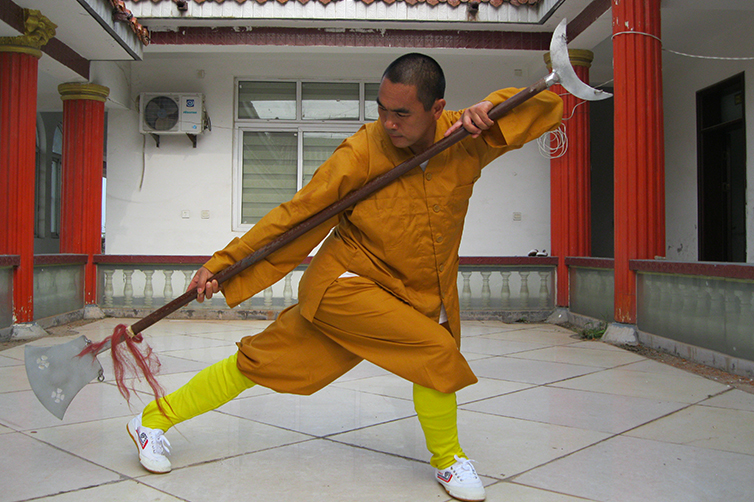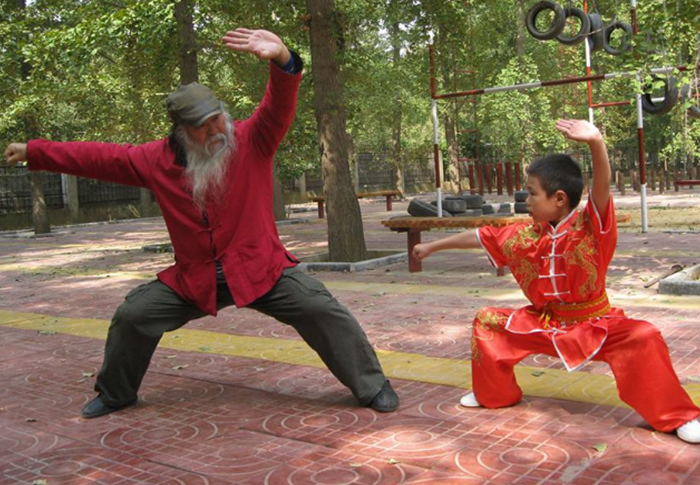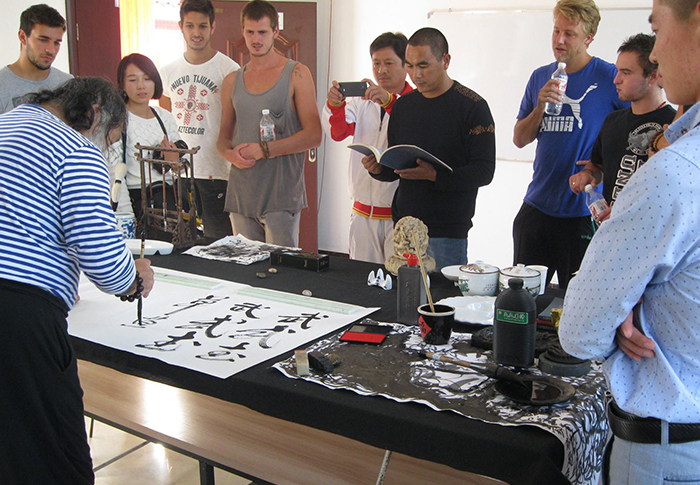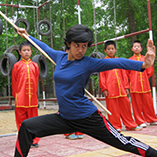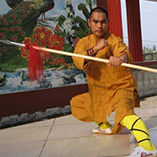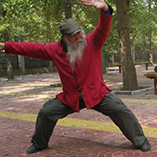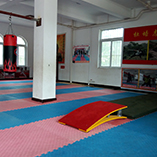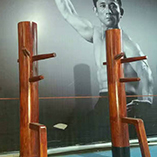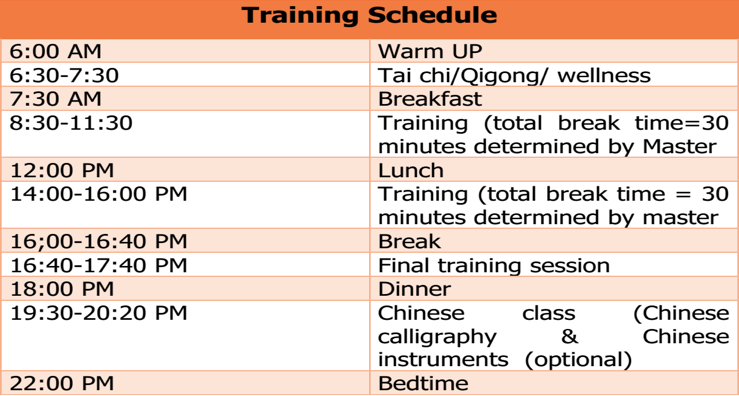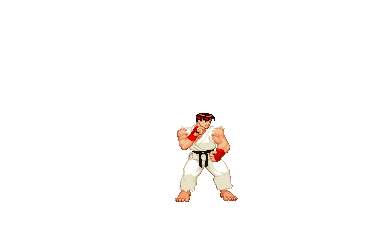Tai chi chuan or Taijiquan is an internal Chinese martial art using hard and soft techniques and represents the fusion of Yin and Yang applied to the human body. Most modern styles of tai chi trace their development to at least one of five traditional schools: Chen Style, Yang Style, Wu/Hao Style, Wu and Sun Style.
Tai chi chuan is generally classified as a soft internal style and its study primarily involves three aspects health, meditation and martial art.
Health: An unhealthy or otherwise uncomfortable person may find it difficult to meditate to a state of calmness or to use tai chi as a martial art. Tai chi's health training therefore concentrates on relieving the physical effects of stress on the body and mind. For those focused on tai chi's martial application, good physical fitness is still an important step towards effective self-defense.
Meditation: The focus and calmness cultivated by the meditative aspect of tai chi is seen as necessary in maintaining optimum health (in the sense of relieving stress and maintaining homeostasis) and in application of the form as a soft style martial art.
Martial art: The ability to use tai chi as a form of self-defense in combat is the test of a student's understanding of the art. Tai chi chuan martially is the study of appropriate changes in response to outside forces; the study of yielding and "sticking" to an incoming attack rather than attempting to meet it with opposing force.
Shaolin Boxing is the short form for 'Shaolin Temple Boxing Techniques'. As a means of spiritual discipline, Shaolin Boxing has been integrated in hundreds of schools, with Chan Buddhist influence or Zen guiding its presence. 'Shaolin boxing styles very greatly. There are in fact hundreds of different boxing styles. Students usually will practice general basics and then will devote him or herself to one or two boxing and weapon styles.
Shaolin Kung fu practice is generally talked about in terms of three realms.
1. In the primary realm, the practitioner practices their form and appearance.
2. In the intermediate realm, there is the integration of mind and fist, changing the tangible into the intangible, turning the law into the lawless; obeying no rules, having no movement to follow, controlling the enemy in the intangible. An ancient boxing manual reads, `defeat a person in the intangible or fail being seen`.
3. Shaolin Kungfu's highest realm is for all to be guided by the heart and to fight not just from form but from the formless.
Shaolin Buddhist practice is started in the mindful training of Kung Fu as it cultivates greater awareness. The purpose of learning Kung Fu no longer becomes the goal in itself, but is used as a means of awakening.
Features of Shaolin Kung Fu
1. Short but precise.
2. Box in a line.
3. Casual footwork.
4. Roll in and out.
5. Integration of mind and behavior.
6. Bending but actually not and straight but actually not.
7. Rise high in a tight form and drop in a spreading way. Rise to move with an intention of advance and drop to move with an intention of retreat.
8. Integration of Buddhism and boxing.
9. Focus on defense.
10. Combination of attacking and defending.
11. Numerous tricks.
12. Simple and practical.
13. Vigorous and strong.
14. Numerous acts shrinking back.
15. Numerous kicks.
16. Produce sounds.
Qigong, qi gong, chi kung, or chi gung (simplified Chinese: 气功; traditional Chinese: 氣功; pinyin: qìgōng; Wade–Giles: chi gong; literally: "Life Energy Cultivation") is a holistic system of coordinated body posture and movement, breathing, and meditation used for health, spirituality, and martial arts training. With roots in Chinese medicine, philosophy, and martial arts, qigong is traditionally viewed as a practice to cultivate and balance qi (chi) or what has been translated as "life energy".[1]
According to Daoist, Buddhist, and Confucian philosophy, respectively, qigong allows access to higher realms of awareness, awakens one's "true nature", and helps develop human potential.[2]
Qigong practice typically involves moving meditation, coordinating slow flowing movement, deep rhythmic breathing, and calm meditative state of mind. Qigong is now practiced throughout China and worldwide for recreation, exercise and relaxation, preventive medicine and self-healing, alternative medicine, meditation and self-cultivation, and training for martial arts.
Qigong, qi gong, chi kung, or chi gung (simplified Chinese: 气功; traditional Chinese: 氣功; pinyin: qìgōng; Wade–Giles: chi gong; literally: "Life Energy Cultivation") is a holistic system of coordinated body posture and movement, breathing, and meditation used for health, spirituality, and martial arts training. With roots in Chinese medicine, philosophy, and martial arts, qigong is traditionally viewed as a practice to cultivate and balance qi (chi) or what has been translated as "life energy".[1]
According to Daoist, Buddhist, and Confucian philosophy, respectively, qigong allows access to higher realms of awareness, awakens one's "true nature", and helps develop human potential.[2]
Qigong practice typically involves moving meditation, coordinating slow flowing movement, deep rhythmic breathing, and calm meditative state of mind. Qigong is now practiced throughout China and worldwide for recreation, exercise and relaxation, preventive medicine and self-healing, alternative medicine, meditation and self-cultivation, and training for martial arts.
https://en.wikipedia.org/wiki/Qigong
Wing Chun (Chinese: 詠春; pinyin: yǒng chūn; Jyutping: wing6 ceon1; literally: "spring chant"), also romanisedas Ving Tsun or Wing Tsun, (and sometimes substituted with the characters 永春 "eternal springtime"[4]); is a concept-based Chinese martial art and form of self-defense utilising both striking and grappling while specialising in close-range combat.
The alternative characters 永春 "eternal spring" are also associated with some other southern Chinese martial arts, including Weng Chun Kung Fu and Yong Chun .[5][6]
https://en.wikipedia.org/wiki/Wing_Chun
